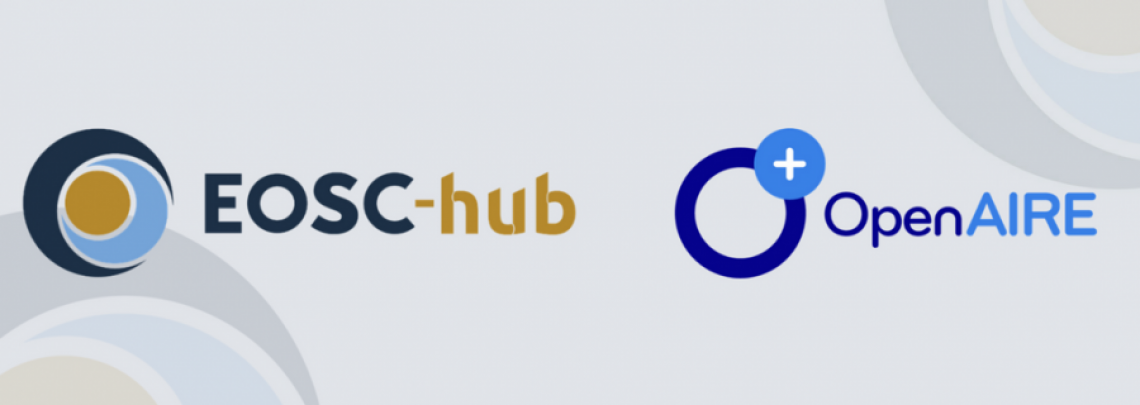Jochen Schirrwagen writes about the new OpenAIRE guidelines
The emerging EOSC ecosystem will unquestionably require a minimum set of interoperability metadata to ensure basic discoverability, navigation and accessibility between systems. The OpenAIRE Guidelines allow content providers in EOSC to expose metadata about their research products in a uniform, broadly accepted format, thereby maximizing their accessibility, interoperability, findability, and support of reproducibility according to FAIR data principles.
What is it about? The description, citation and indexing of scientific results require a consistent use of interoperability guidelines that make these results findable and accessible across infrastructure boundaries, ensuring the sharing and reuse of research in a transparent and reliable manner.
What OpenAIRE has to offer? Already, a significant number of content providers can expose and exchange their content in a homogenous way, thanks to the OpenAIRE Guidelines. The OpenAIRE Guidelines for Content Providers describe and expose different types of research artifacts, providing basic metadata, vocabularies, protocols, and illustrating best practices that come from the library world (proper description and curation), while covering the recent trends in research infrastructures. They are well fitted to bridge the interoperability gaps between research infrastructures at large, their implementation being the stepping-stone for a linked data infrastructure for research, providing a 3600 contextual view of research.
The OpenAIRE Guidelines allow content providers to expose metadata about their research products in a uniform, broadly accepted format, thereby maximizing their accessibility, interoperability, findability, and support of reproducibility according to FAIR data principles.

How does it work? OpenAIRE offers five different sets of Guidelines for content providers covering a variety of research products:
- The Guidelines for Institutional and Thematic Repositories and Publishing Platforms are based primarily on the description of research literature. They are intended to guide repository managers to expose metadata of all scientific publications including, whenever applicable, references to research projects and EU or other funders.
- The Guidelines for Data Archive Managers are based on the description of research data. They use the well-established DataCite metadata schema , provide extensions of metadata properties and controlled vocabularies where necessary and, describe how to interpret these metadata properties according to the nature of the respective research product. They specifically facilitate the linking of research data to publications, software and other research products.
- The Guidelines for Software Repository Managers provide orientation for the description of software products. These give immediate visibility of software as a “citable research product”, having been defined with a pragmatic approach, keeping mandatory properties to the minimum, focusing on properties for citation (attribution and access), and having the possibility for future addition of properties, while disregarding discover-for-reuse properties.
- The Guidelines for Other Research Products focus on the description of research products different from literature, data and software such as research services, protocols, workflows, methods, virtual appliances etc. provided they are available in open access or linked to a publication, project or research community in OpenAIRE.
- The Guidelines for CRIS Managers are designed to map comprehensive research information using the CERIF standard. By implementing then, CRIS managers support the inclusion and therefore the reuse of metadata in their systems within the OpenAIRE infrastructure. For developers of CRIS platforms, the Guidelines provide guidance to add supportive functionalities for CRIS managers and users. Finally, it is worth noting that exchange of information between individual CRIS systems and the OpenAIRE infrastructure is an example of point-to-point data exchange between CRIS systems, since the OpenAIRE infrastructure is itself a CRIS system.
What is the added value? Apart from the enhanced discoverability, the OpenAIRE Guidelines give your repository access to the EOSC ecosystem:
- Being part of FAIR and Open Science: Repository managers enable authors who deposit publications or research data in their repository to fulfill the Open Access and Open Data requirements of the European Commission, and eventually the requirements of other (national or international) funders with whom OpenAIRE cooperates.
- Reporting and monitoring of (open) research: From funders, decision makers and, research performing organizations. ○ Increased discoverability and re-use: OpenAIRE is an integral infrastructure in EOSC.
- Reaching a broader research audience: Via the OpenAIRE value-added services for research communities, content providers can make their content available to a greater research audience.
- Embedding and using additional OpenAIRE services for content providers: Supplementary OpenAIRE services such as, metadata enrichment via the Broker service, usage data and statistics about the research products (and their linked research), are all at the disposal of content providers.
Who to contact? For any questions or suggestions please contact the OpenAIRE Guidelines team.
Jochen Schirrwagen is based at the Bielefeld University and is part of the OpenAIRE Guidelines Team.
